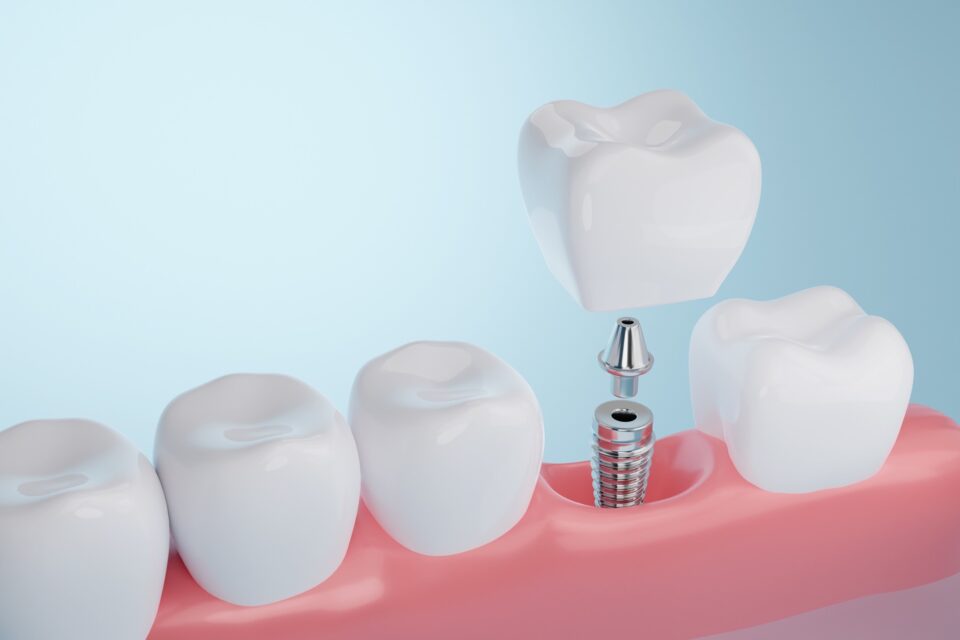For many patients with severe bone loss, dental implants have often been out of reach. But now, there’s a breakthrough solution that’s changing the game—subperiosteal dental implants. These implants are designed to work for those who don’t have enough healthy bone for traditional implants.
Instead of needing bone grafts, subperiosteal implants sit on top of the jawbone, offering a secure fit and a more comfortable option for those who thought they couldn’t benefit from dental implants. This innovative approach is giving people with advanced bone loss a chance to smile confidently again.
How Do Subperiosteal Dental Implants Work For Patients With Severe Bone Loss?
Subperiosteal dental implants are a specialized solution for patients who don’t have enough healthy bone tissue in their jaw to support traditional endosteal implants, which are anchored directly into the bone.
The “subperiosteal” part of the name refers to the placement of the implant structure beneath the gum tissue but above the bone. These implants consist of a metal framework that is custom-made to fit the contour of the patient’s jawbone. Here’s how the process works:
- Custom Implant Frame: During the initial consultation, a dentist will take a 3D scan or imaging of the patient’s jaw to assess the bone structure. From there, a custom subperiosteal frame is created to fit the patient’s jaw. This frame is designed to sit just beneath the gum tissue but above the bone, providing a stable foundation for the implants.
- Surgical Placement: The dentist will perform a surgical procedure to place the frame onto the jawbone. This process involves making small incisions in the gum tissue to place the subperiosteal framework precisely in position. Unlike traditional implants, which require drilling into the bone, subperiosteal implants rest on top of the bone structure, making them ideal for those with insufficient bone density.
- Healing and Integration: After the frame is placed, the gums are closed, and the healing process begins. Over time, the gums will heal around the implant, allowing it to integrate with the bone structure. Once healing is complete, the final abutments are attached to the framework, and dental crowns or bridges are placed on top.
- Support for Replacement Teeth: The framework’s metal structure acts as a sturdy base to support a full set of prosthetic teeth, including crowns, bridges, or dentures, which can help restore both the function and appearance of the smile.
What are the Advantages of Subperiosteal Dental Implants Compared to Traditional Implants?
Subperiosteal dental implants offer a host of benefits that make them an appealing option for patients with severe bone loss. Here are some of the key advantages over traditional dental implants:
1. No Need for Bone Grafting
One of the biggest hurdles for patients with bone loss is the need for bone grafting, a procedure in which bone material is added to the jaw to build up the bone structure. With subperiosteal implants, bone grafting is often not necessary. Since the implant frame rests above the bone, there is no need for the patient to undergo this additional procedure, saving both time and the discomfort associated with bone grafting.
2. Faster Treatment Time
Traditional dental implants can take several months to complete, especially if bone grafting is required to ensure a stable foundation for the implant. With subperiosteal implants, the process is generally faster. Since there’s no need to wait for bone healing or bone grafting, patients can move through the treatment plan more quickly, allowing for a shorter total treatment time.
3. Improved Stability for Patients with Severe Bone Loss
In cases of extreme bone loss, traditional implants may not provide enough support, which could lead to failure or complications. Subperiosteal implants are specifically designed for patients with insufficient bone structure. The custom frame, which rests on top of the bone, provides a level of stability that can hold replacement teeth securely in place, offering long-term results.
4. Minimally Invasive Procedure
While subperiosteal implants still require surgery, the procedure itself is typically less invasive compared to traditional implant placement. The dentist does not need to drill deep into the bone, which reduces the risk of complications and can lead to a quicker recovery.
5. Improved Aesthetics
For patients who have suffered significant bone loss, subperiosteal implants can help restore the natural contour of the jaw. The metal frame is designed to follow the patient’s unique anatomy, providing an aesthetically pleasing result with natural-looking teeth once the implants are fully placed.
6. Ideal for Those with Limited Jawbone
The major benefit of subperiosteal implants is their ability to address severe bone loss in patients who may not be suitable candidates for traditional implants. These implants make it possible for people with poor bone density to restore their smile without needing major reconstructive surgery.
Who is a Good Candidate For Subperiosteal Dental Implants?
While subperiosteal implants offer a revolutionary solution for patients with severe bone loss, they’re not the right choice for everyone. So, who makes a good candidate for this type of dental implant? Here are the ideal characteristics of a patient who would benefit most:
- Severe Bone Loss: Subperiosteal implants are particularly beneficial for individuals who have lost a significant amount of bone in their jaw due to periodontal disease, injury, or prolonged tooth loss. If you’ve been told that you’re not a candidate for traditional implants due to insufficient bone, subperiosteal implants might be the solution you’ve been looking for.
- Avoidance of Bone Grafting: If you are not a candidate for bone grafting or are not interested in undergoing a more invasive procedure, subperiosteal implants are a viable alternative. Since these implants rest on top of the bone, they eliminate the need for grafting, making them a great choice for individuals seeking a less invasive solution.
- Good General Health: Like any dental procedure, good overall health is essential for a successful outcome. While subperiosteal implants do not require the same level of bone health as traditional implants, patients should be free from serious chronic conditions like uncontrolled diabetes or active infections that might impede healing.
- Patient Who Wants Long-term Results: Subperiosteal implants are designed for long-term stability and success, making them an ideal solution for patients seeking a durable, permanent solution to replace missing teeth.
If you are considering subperiosteal implants, it’s crucial to consult with an experienced dental professional who can assess your needs and determine whether this solution is right for you.
How Long Does the Recovery Process Take After Getting Subperiosteal Dental Implants?
Like any surgical procedure, recovery time after getting subperiosteal dental implants varies depending on the individual and the complexity of the case. However, there are general guidelines to keep in mind:
- Initial Healing: After the surgery, patients can expect some swelling, discomfort, and bruising around the gums and jaw. These symptoms are typically managed with over-the-counter pain relievers or prescribed medications. Initial healing generally takes about 1-2 weeks.
- Full Integration: After the frame is placed, it can take several months (usually 3 to 6 months) for the gums to heal fully and for the frame to integrate with the jaw. Unlike traditional implants, subperiosteal implants don’t require bone fusion, but the gums need time to adapt around the implant framework. This stage is crucial for the stability and longevity of the implants.
- Final Placement of Teeth: Once the framework has fully healed and integrated, the next step is attaching the abutments and final prosthetic teeth. This process can be completed in a matter of weeks following full gum healing.
While the recovery time for subperiosteal implants is generally quicker than traditional implants, it’s important to follow all aftercare instructions to ensure a smooth recovery. Your dentist will provide detailed guidance on how to manage pain, swelling, and other aspects of the healing process.
Subperiosteal dental implants offer a groundbreaking solution for patients with severe bone loss, allowing them to regain functionality, restore their smile, and improve their quality of life.
By bypassing the need for bone grafting and providing a stable framework for replacement teeth, subperiosteal implants are an excellent option for individuals who thought traditional implants were beyond their reach.
If you’re dealing with severe bone loss and looking for an innovative, reliable way to restore your smile, consider speaking with a dental professional about the benefits of subperiosteal implants.
Ready to Restore Your Smile? Subperiosteal Implants at JBDentistry Are the Solution You’ve Been Searching For!
At Jaline Bocuzzi, DMD, PA // JBDentistry, we’re dedicated to providing cutting-edge solutions for patients with severe bone loss. If traditional dental implants are not an option due to insufficient bone structure, subperiosteal implants could be your perfect alternative.
Our team is here to guide you through every step of the process, from consultation to final placement, ensuring you regain a beautiful, functional smile. Don’t wait any longer—schedule your consultation today and discover how subperiosteal implants can change your life!

